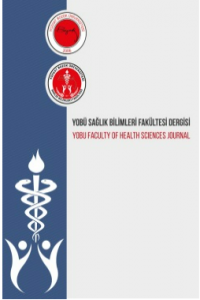AN SAMPLE OF ELDERLY WOMAN NEGLIGENCE (HELMINTHS LOCATED IN EYES): CASE REPORT
Elderly neglect, nursing, , nursing care, eye, helminth
AN SAMPLE OF ELDERLY WOMAN NEGLIGENCE (HELMINTHS LOCATED IN EYES): CASE REPORT
Elderly neglect, nursing, , nursing care, eye, helminth,
___
Referans 1 Tereci D, Turan G, Nergis K, Öncel T, Arslansoyu N. An overview of the concept of old age. Beyond the Horizon of Scientific Journal 2016; 16(1): 84- 116.- Başlangıç: 2020
- Yayıncı: Yozgat Bozok Üniversitesi
EBEVEYNLERİN OTİZMLİ ÇOCUKLARI İÇİN OBEZİTE ALGILARI VE ENDİŞELERİ
Ümran ÇEVİK GÜNER, İrem BİLKAY
HEMŞİRELİK EĞİTİMİNDE YENİ BİR YOL: DRAMA
Sultan Esra SAYAR, Cantürk ÇAPIK
DID THE COVID-19 PANDEMIC AFFECT ON NURSING STUDENTS’ PROFESSIONAL ATTITUDES? A DESCRIPTIVE STUDY
Fatma GÜDÜCÜ TÜFEKÇİ, Mehmet BULDUK, Veysel CAN, Meltem ÖZCAN, Serap BUZTEPE
ÇOCUK SAHİBİ OLMA İSTEĞİ ÖLÇEĞİ’NİN TÜRKÇE GEÇERLİK VE GÜVENİRLİK ÇALIŞMASI
Nurgül KAMİLOĞLU, Pınar IRMAK VURAL
Merve GÜNEŞ, Pınar IRMAK VURAL
ESKİ AMA ESKİMEYEN HASTALIK SİFİLİZ: OLGU SERİSİ
Sevil ALKAN, Anıl AKÇA, Taylan ÖNDER, Safiye Bilge GÜÇLÜ KAYTA, Servan VURUCU, Cihan YÜKSEL, Alper ŞNER
AN SAMPLE OF ELDERLY WOMAN NEGLIGENCE (HELMINTHS LOCATED IN EYES): CASE REPORT
